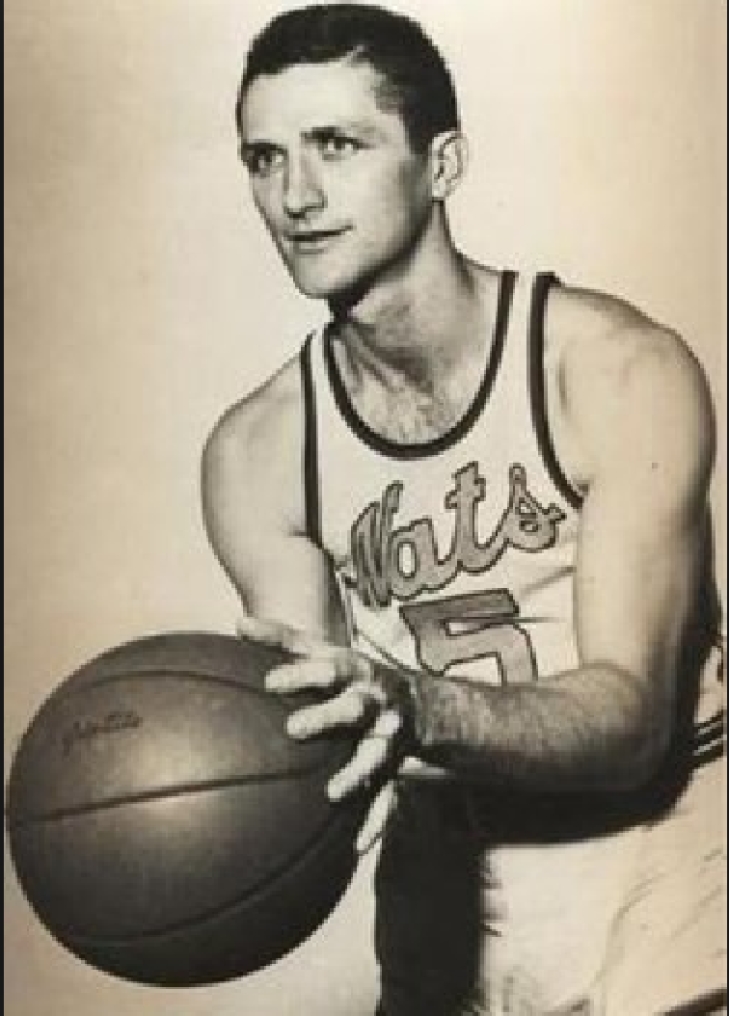
Committee Chairman
63. Terry Dischinger
Terry Dischinger was one of the most successful players in Purdue history. He set multiple Boilermaker records and averaged 28.3 Points and 14.3 Rebounds per Game in his three years in the NCAA. His amateur career also saw Dischinger win Olympic Gold for the United States in 1960, and his professional career was also exceptional.
Drafted by the Chicago Zephyrs in the Second Round in 1962, Dischinger brought his cerebral nature to the NBA. His efficient play garnered him three consecutive All-Star appearances, coinciding with his first three NBA years, though they were all in three different cities. The Zephyrys relocated to Baltimore, and in his third year, he was traded to the Detroit Pistons. The 1963 Rookie of the Year was not a dazzling scorer, but he averaged over 20 Points per Game in his first two seasons and 18.2 in his third.
Dischinger’s career was interrupted by military service, and when he came back in 1967, he was not the same player. He returned to the Pistons for five years, scoring less, but still leading by example. Dischinger was traded to Portland, where he played one final year before retiring.
James Hetfield slams the Rock Hall over Motorhead's omission
During a recent appearance on the Metallica Report, Metallica frontman James Hetfield expressed his dismay that the iconic Lemmy Kilmister has not yet been inducted into the Rock and Roll Hall of Fame. In a heartfelt tribute, Hetfield revealed that he had recently gotten a new tattoo, which used Lemmy’s ashes, a permanent symbol of his respect and admiration for the leader of Motorhead.
Hetfield's words were poignant while describing the artwork:
“The Iron Cross and the ace of the spades. Lemmy is able to still fly the bird to the world via me. And just a reminder of what an inspiration he has been in my life – what to do, and what not to do.”
In regards to Motorhead’s exclusion from the Rock and Roll Hall of Fame, Hetfield stated:
“The most rock and roll lifestyle living person on this planet is not in the Rock and Roll Hall of Fame, which is a travesty, a shame. It’s kind of a disrespect to rock and roll, basically.”
In our most recent (though not yet updated to reflect the 2024 inductees and 2025 eligible acts) Motorhead was ranked #17 of those to consider for the Rock and Roll Hall of Fame.
Notinhalloffame List Update: 141-150 on Football Revised
The problem with running a Hall of Fame-related website is that many of the big ones we cover all have announcements within months of each other. The backbone of what we do is list-related, resulting in a long push to revise what we already have, specifically now with our Football and Basketball Lists.
At present, we have a minor update as we have completed the fifteenth ten of the 2024 Football List, which you can comment on and vote on:
The new 141 to 150:
141. Isiah Robertson
142. Gino Cappelletti
143. Irving Fryar
144. Hardy Nickerson
145. Chad Johnson
146. Gene Brito
147. Riley Matheson
148. Bill Bergey
149. Nolan Cromwell
150. Rodney Harrison
Rankings are impacted annually based on your comments and votes.
Thank you all for your patience. We will soon unveil more changes to the football and basketball lists.
59. Paul Seymour
Paul Seymour is one of those players who did not look like much of an athlete and did not move like one, but used every pound of his undersized frame and every brain cell in his head to carve out a long career in basketball.
Playing his college ball at the University of Toledo, Seymour began his pro career with the Toledo Jeeps, the Baltimore Bullets of the NBL, and then the Syracuse Nationals, where he was with them when they were absorbed into the NBA. He played for Syracuse throughout the 1950s where his leadership and work ethic made him a valuable commodity, especially on the distribution and defensive side of the ball. A three-time All-Star (1953-55), Seymour was in the top five in Assists in all of those years, with a respectable scoring stat of 14 Points per Game over that period. Not only was Seymour a good player, he played a large part along with eventual Hall of Famer Dolph Schayes in Syracuse, winning their only title in Upstate New York.
Following their title, Seymour became a player/coach and gradually reduced his playing time for the club's benefit. He retired as a player in 1960 but coached various teams for another decade.





